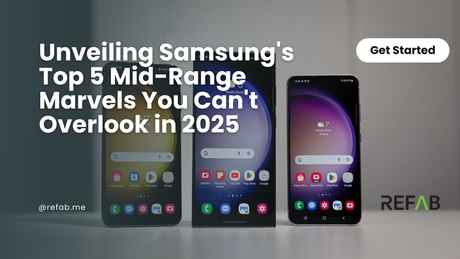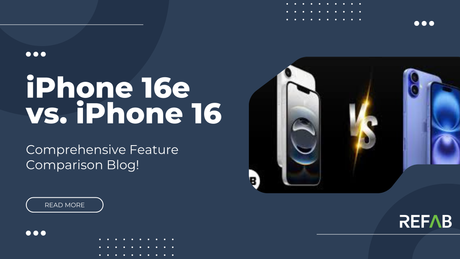Apple's introduction of the iPhone 16e offers consumers a budget-friendly alternative to the standard iPhone 16. While both models share several core features, the iPhone 16e omits certain functionalities to achieve its lower price point. Below is a detailed comparison highlighting the key differences between the two devices.
Display & Design: Absence of Dynamic Island and Reduced Brightness
- Design Similarities with Notable Differences
Both the iPhone 16e and iPhone 16 feature a 6.1-inch Super Retina XDR OLED display. However, the iPhone 16e lacks the Dynamic Island, an interactive feature present in the iPhone 16.
- Brightness Levels
- iPhone 16: Offers up to 1,600 nits peak brightness for HDR content and 2,000 nits peak brightness for outdoor usage.
- iPhone 16e: Provides up to 1,200 nits peak brightness for HDR content and 1,600 nits peak brightness for outdoor usage.
This indicates that the iPhone 16 delivers superior visibility, especially under direct sunlight.
- Build Material
The iPhone 16e features an aluminum frame, whereas the iPhone 16 is constructed with a color-infused glass back.
Camera System: Simplified Setup in iPhone 16e
- Rear Camera Configuration
- iPhone 16: Equipped with an advanced dual-camera system comprising a 48MP Fusion main camera and a 12MP Ultra Wide camera.
- iPhone 16e: Features a single 48MP main camera, lacking the Ultra Wide lens.
The absence of the Ultra Wide lens in the iPhone 16e means it does not support ultrawide photography or macro photography.
- Video Recording Capabilities
The iPhone 16e lacks certain advanced video features available in the iPhone 16, such as:
- Cinematic Mode: Enables recording videos with shallow depth of field.
- Action Mode: Provides enhanced stabilization for video recording.
- Spatial Video Recording: Captures immersive videos for devices like Apple's Vision Pro headset.
- Front Camera Features
Both models offer similar front camera capabilities; however, the iPhone 16e may lack certain advanced features present in the iPhone 16.
Performance: Hardware and Processing Variations
- Processor and Graphics
Both models are powered by Apple's A18 chip. However, the iPhone 16e's GPU has four cores, whereas the iPhone 16's GPU boasts five cores, potentially offering better graphics performance on the iPhone 16.
- Connectivity
The iPhone 16e introduces Apple's in-house C1 modem, designed for improved efficiency.
Battery & Charging: Differences in Charging Capabilities
- Battery Life
- iPhone 16: Offers up to 22 hours of video playback.
- iPhone 16e: Provides up to 26 hours of video playback.
Interestingly, the iPhone 16e offers longer battery life despite being the more budget-friendly option.
- Charging and Accessories
- MagSafe Compatibility: The iPhone 16 supports MagSafe technology, allowing for faster wireless charging and compatibility with a range of accessories. The iPhone 16e lacks this feature.
- Wireless Charging: The iPhone 16e supports standard Qi wireless charging up to 7.5W, whereas the iPhone 16 supports faster MagSafe wireless charging.
Additional Features: What’s Missing in the iPhone 16e
- Action Button Functionality
Both models feature the new Action Button; however, the iPhone 16e does not include the Camera Control function, which offers quicker access to photo and video settings on the iPhone 16.
- Wi-Fi Support
The iPhone 16e lacks support for Wi-Fi 7, which is available on the iPhone 16 for faster wireless speeds.
Pricing: Cost Considerations
- iPhone 16e: Starts at $599 for the 128GB model.
- iPhone 16: Starts at $799 for the same storage capacity.
The iPhone 16e is positioned as a more affordable option, making it an attractive choice for budget-conscious consumers.
Conclusion: Making an Informed Choice
The iPhone 16e offers a compelling package for users seeking a modern iPhone experience at a lower cost, albeit with certain compromises in camera versatility, display brightness, and accessory compatibility. Prospective buyers should carefully assess which features are essential to their needs before making a decision.







